Are you putting together a budget, so you’d like to track your gasoline usage? And you’re starting by finding out how many gallons of fuel your car could hold? You’ve come to the right place, for we have researched this question, and we have the answer for you.
Smaller cars have 12-gallon tanks on average. Larger cars are usually equipped with 15- to 16-gallon tanks.
We compiled other fuel- and tank-related information that you might find useful or interesting in the succeeding sections. Read on!
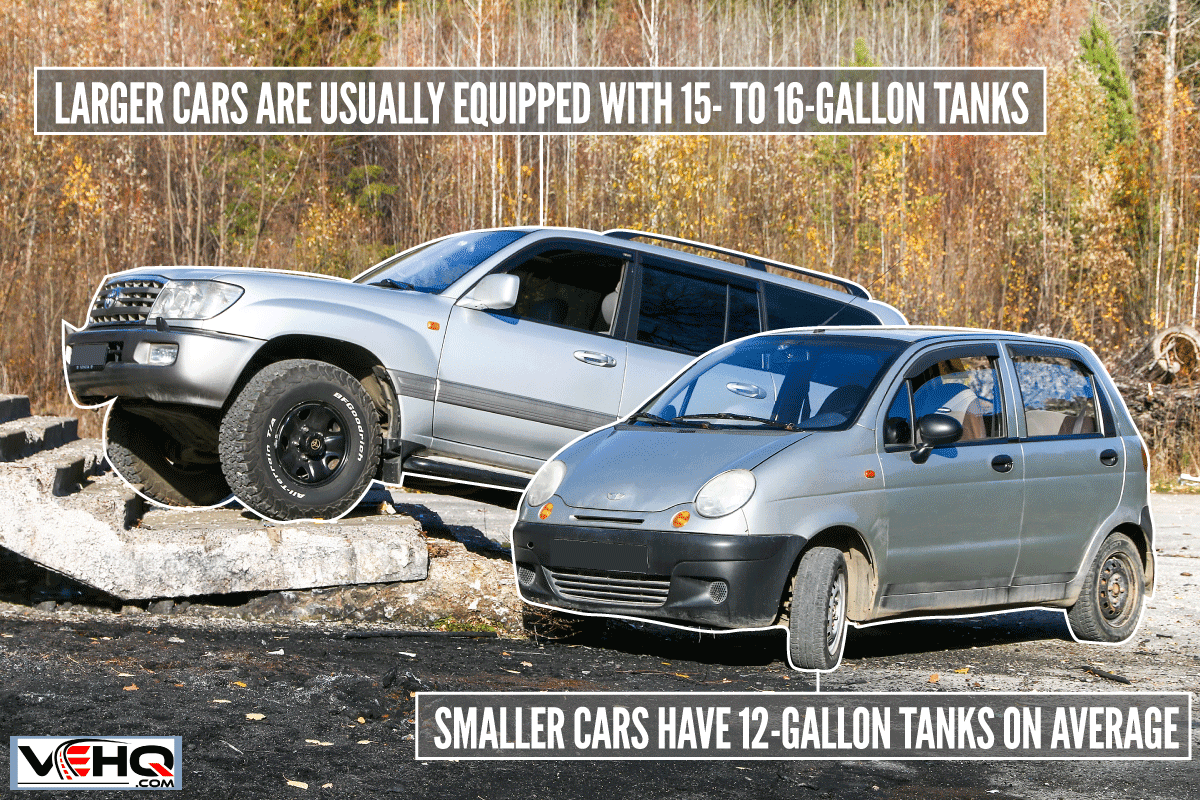
How many gallons does a typical car hold?
The average we provided is based on car models across different manufacturers.
For example, a 2020 Honda Fit Sport has a 10.6-gallon fuel tank. A 2014 Mazda 2 Touring, on the other hand, has an 11.3-gallon fuel tank, while a 2019 Ford Fiesta SE Sedan has a 12.4-gallon fuel tank.
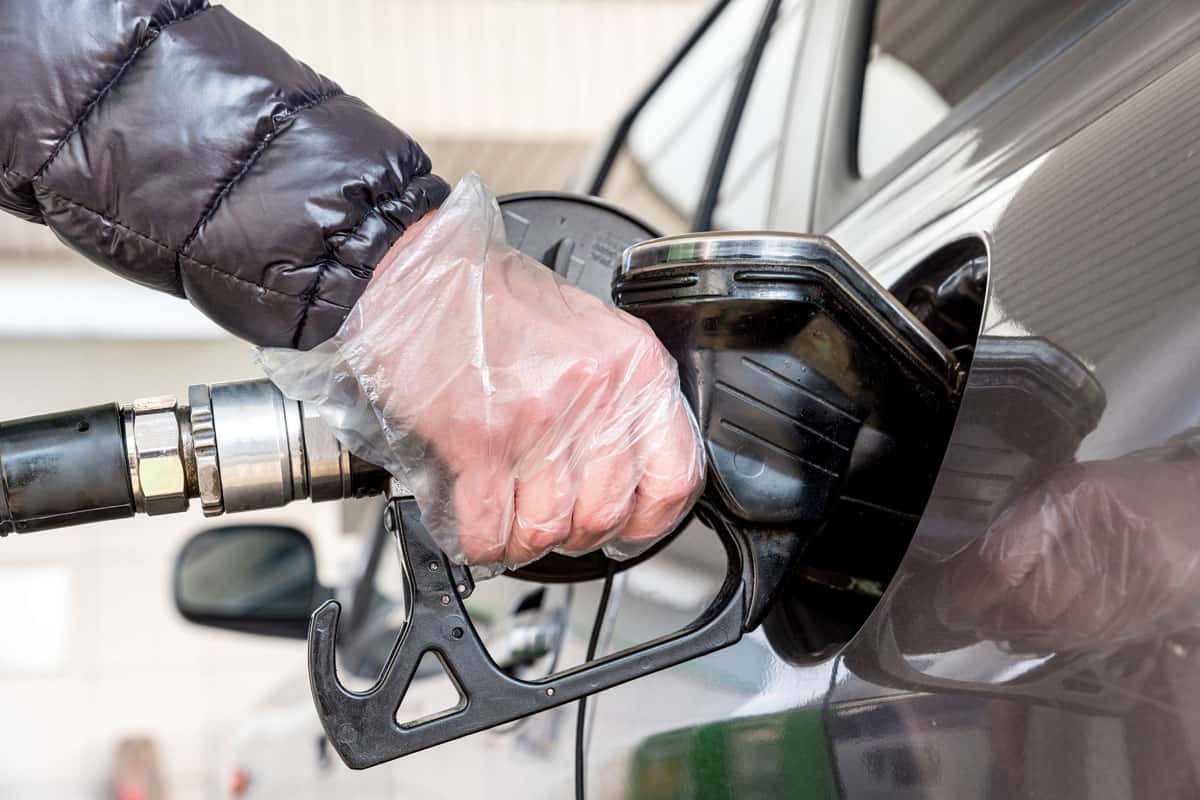
Does engine size affect tank size?
Manufacturers normally match the size of the engine with the size of the fuel tank. Matching the size of the fuel tank allows you to travel further between refills.
Let’s look at this concept more closely.
Engine Sizes
The number that you see on your car model usually represents capacity or displacement—unless it is the year model. You will often see numbers written as 2.0, 1.5, or 2.5.
Engine capacity is commonly represented by cubic centimeter (or cc) as a unit of measurement. Each cubic centimeter is also equal to one milliliter. If the engine's volume reaches 1,000 ccs or more, it is more practical to use liters instead.
The engine capacity is the total capacity of all the engine cylinders. Thus, each of the six cylinders in a 3.0-liter engine will have a capacity of 500 cc. This capacity is how much fuel and air a cylinder can take and compress for combustion in each engine revolution.
If you run that 3.0-liter engine at 2,000 RPMs, each cylinder can consume 500 cc multiplied by 2,000. To get the total consumption of the engine, we multiply it by six for each cylinder.
In this example, our 3.0-liter engine can consume a total of 1,585 gallons of fuel and air mix every minute at 2,000 RPMs.
If you only have a 12-gallon fuel tank on a car with a 3.0-liter engine, then it can burn through that fuel fast.
How many gallons of fuel can an F1 car hold?
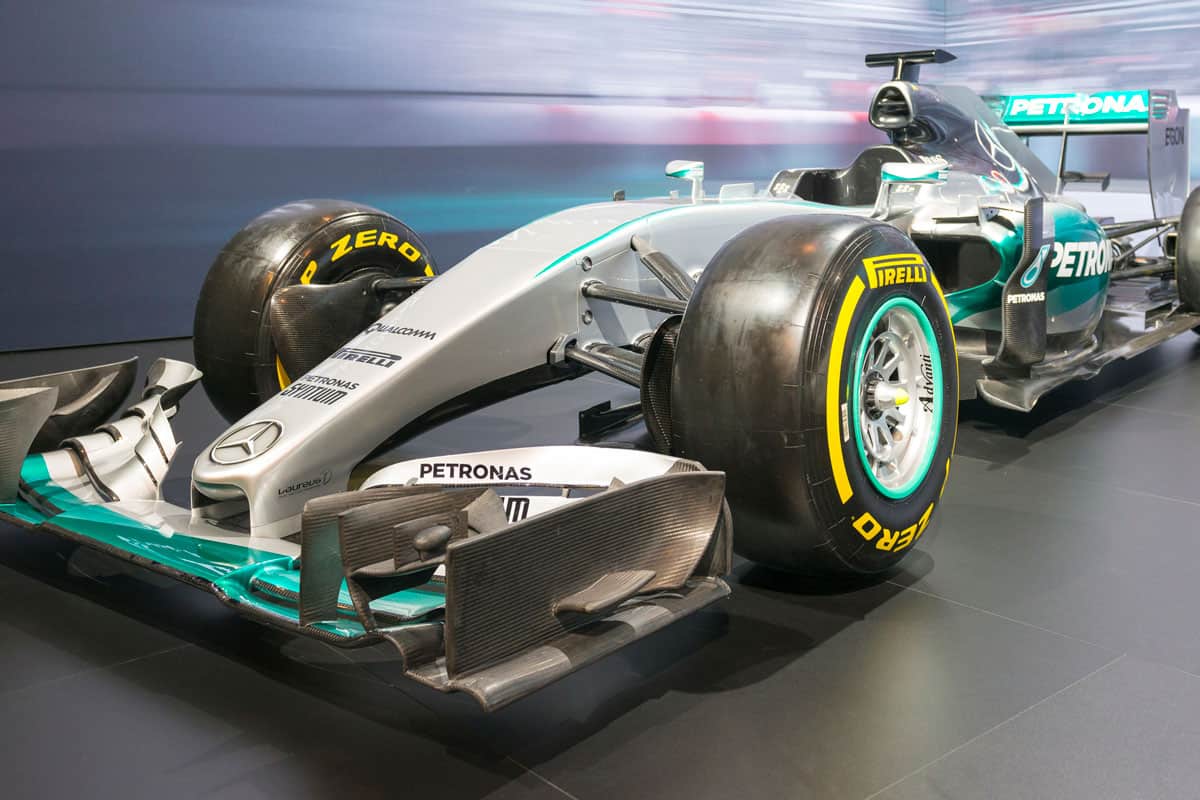
F1 cars have limited fuel per race. All participants are only given 110 kilograms of fuel to finish the race. It then depends on the car's team to determine how much fuel is added during refuel stops.
If they put too much fuel, the car becomes too heavy and will need to consume more fuel to run fast. If they put in too little, the car will have to stop and refuel more times.
Thus, instead of maximizing the fuel tank capacity of an F1 car, they strategize the amount of fuel that they will put into the car so that it can finish the race without exceeding the maximum fuel.
How long does a full tank of gas last?
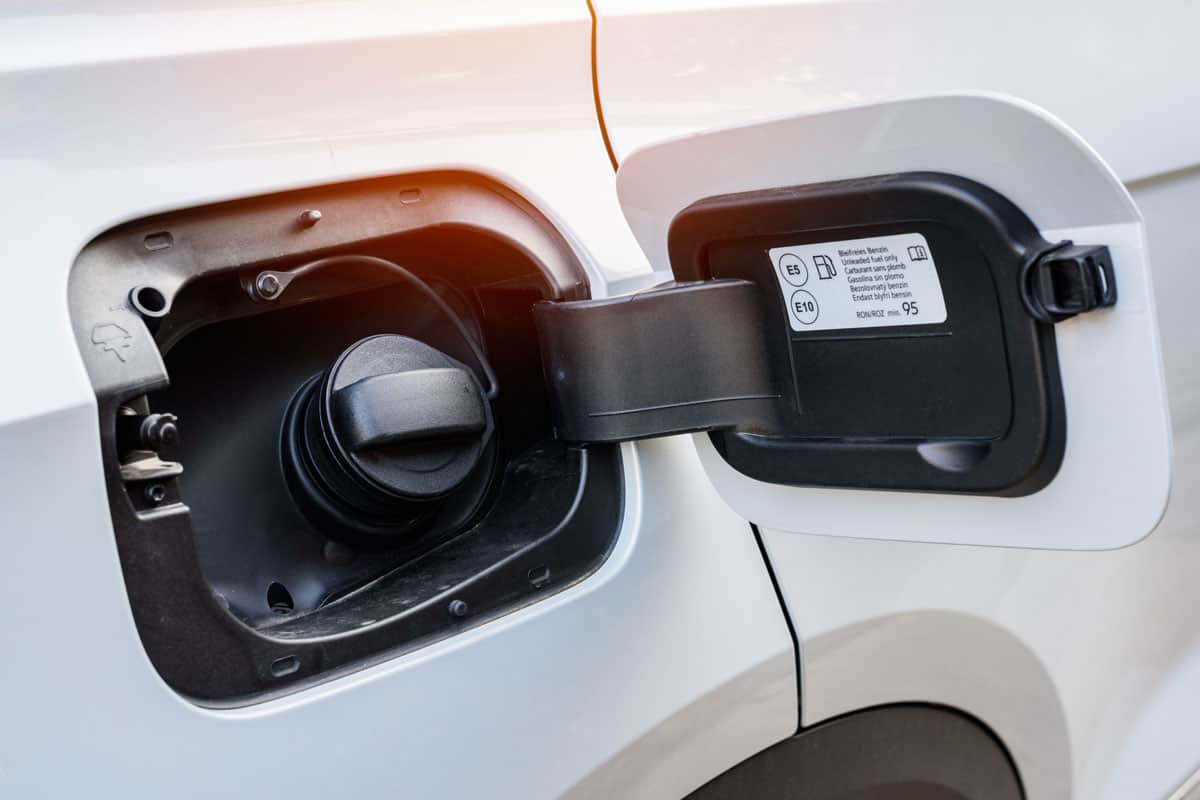
The distance that a full gasoline tank can travel is different for each car.
Many factors determine how far a full tank of fuel on your car can go. The way you drive and where you drive are some of the factors that greatly affect the distance that your car can travel on a full tank.
Additionally, your car’s MPG plays a large role in how long a full tank of gas will last in your car.
You can find your car model on the Fuel Economy website by the US Department of Energy. The Fuel Economy website contains a database of different cars and models sold in the US and their MPGs.
The website also has a trip calculator that computes how much fuel you’d consume from one point in the US to any destination in the US.
What is the average range per tank for an SUV?
SUVs are designed with different engine sizes and capacities, so it is difficult to get an average range per fuel tank capacity.
For example, Ford Escape—a small SUV from Ford—has a 16.5-gallon tank. On the other hand, the Expedition has models equipped with 28- to 33.5-gallon fuel tanks.
However, here are some SUVs that are known for their range per tank:
- 2018 Grand Jeep Cherokee – 738 miles on its 24.8-gallon tank
- 2018 Chevrolet Suburban – 680 miles on its 31-gallon tank
- 2019 Cadillac Escalade ESV – 682 miles on its 31-gallon tank
How far can an average car run on a full tank?
A standard car can travel 200 to 300 miles on a full tank of gas.
Whether you drive in the city or on the highway can affect the distance that you can drive on a full tank of gas. Your car’s MPG plays a large role too.
What factors can influence the distance you can travel on a full tank?
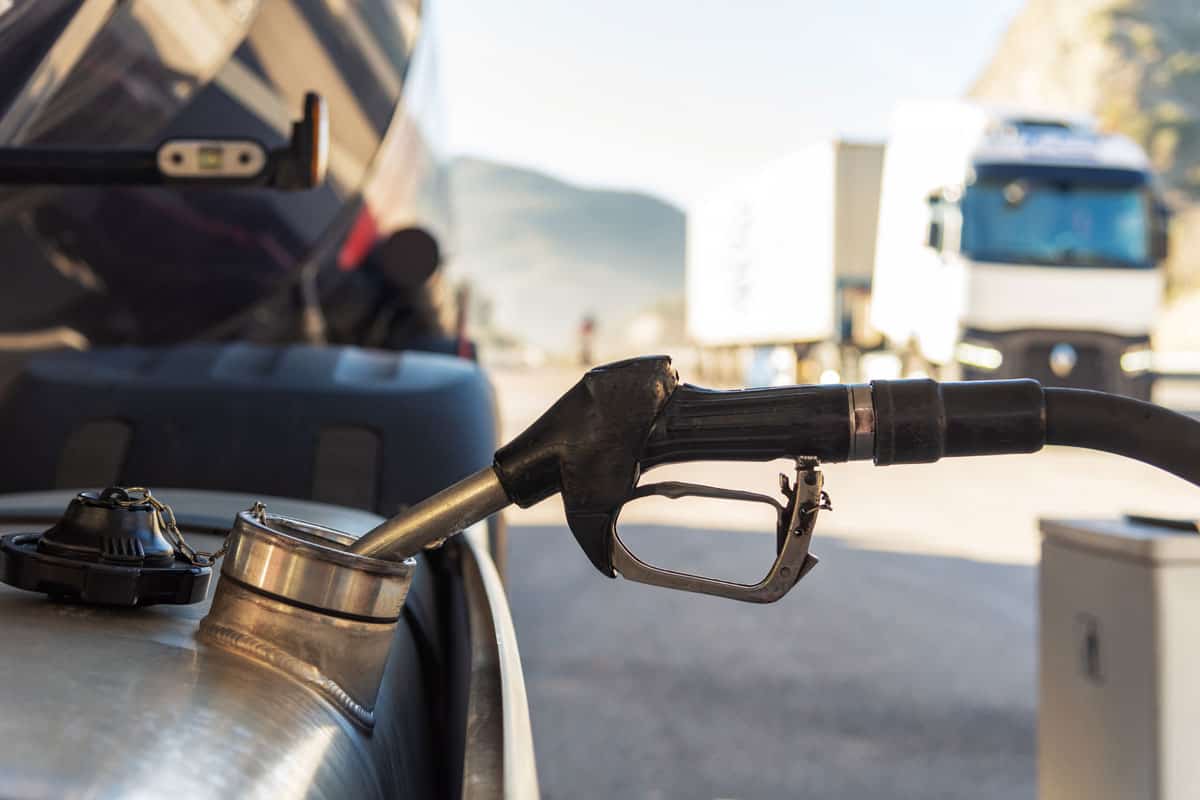
Several factors can impact the MPG of your car—reducing the total distance that you can travel. Here are the factors that you likely encounter most often:
Driving In Traffic
Driving in traffic—whether it's on the highway or in the city—wastes fuel while your car is motionless and waiting in traffic. The longer you’re in heavy traffic, the more fuel you waste.
Even though heavy city traffic is expected, you can occasionally experience heavy traffic on highways too. To compute the distance that you can travel on a full tank, factor in the heavy traffic that you will encounter along the way.
Road Driving Conditions
Road conditions also impact the distance you can travel on a full fuel tank.
A slippery road, for example, will prevent you from driving fast and getting to a cruising speed where you maximize your fuel consumption. Heavy rain will also force you to travel slower and thus cause your car to consume more fuel.
If you travel offroad, you also consume more fuel compared to the distance that you’re traveling. This is because the power that the engine generates goes to pushing through offroad obstacles instead of speed that gets you more miles. The same is true for traveling on rough roads.
Road Temperatures
This may come as a surprise to some, but your car’s air conditioner and defrost option makes your engine consume more fuel. A car’s air conditioner can use up to 20% of your car’s fuel.
Thus, when you’re driving on a hot summer and decide to use the air conditioner in your car, you can expect the distance you can travel on a full tank will also be slightly less.
Tire Condition
The condition of your tires also affects the amount of fuel that your car consumes when you drive.
New tires with fresh treads and no deformities have a great grip on the road. This means that the power from your engine that goes to the tires directly goes to the road for acceleration.
On the other hand, old tires with deformities will have flatter areas on some sides. The engine will need more force to move these tires, which equates to slightly higher fuel consumption.
Tires with good treads will give you a better grip on slippery roads compared to almost bald tires. Bald tires on slippery roads will slip and waste engine rotation.
Age Of Oil
Engine oil keeps the different parts of the engine well lubricated. Lubrication is important to engine performance and efficiency.
If the oil is old, it will no longer be able to provide the best lubrication for your engine. Without lubrication, you lose some of the energy that the engine produces to counteract friction.
A well-lubricated engine produces very little friction that the engine needs to counteract. Therefore, you can expect less range from a full tank of fuel on a car with old oil.
Air Filters
Air filters keep the air that goes into your engine clean. However, as time goes by, the air filter gets clogged by the dirt that is filtered off. Once the air filter gets clogged by dirt, there is less air that gets to your engine.
If there is less airflow going into the engine, it will end up working harder and thus consume more fuel. If you have clogged air filters, you can expect a drop in the total distance you can travel on a full fuel tank.
Fuel Injectors And Fuel Filters
Modern fuel injectors are computer-controlled to provide your engine with an accurate amount of fuel for combustion. A dirty fuel injector will no longer be able to provide an accurate amount of fuel. In some cases, this can cause your car to consume more fuel than is needed.
Additionally, a dirty fuel filter can affect the flow of fuel going into the engine of your car. Less fuel flow can force your car to send more fuel than is needed. This causes your engine to consume more fuel than normal.
Dirty fuel filters and fuel injectors will lessen the maximum distance that you can travel on a full tank of gasoline.
Conclusion
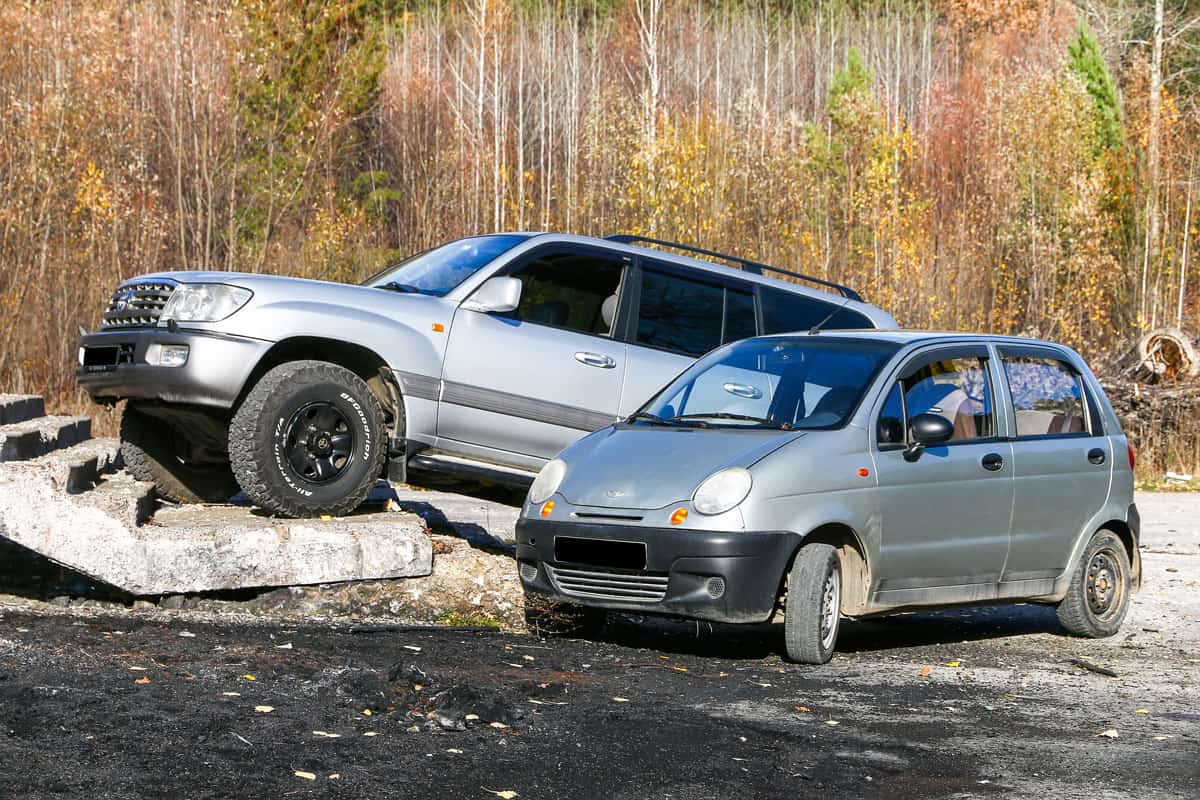
The fuel tank of a typical car is usually based on the engine's capacity.
If you enjoyed reading this article, you might find the articles below equally enjoyable to read:
How To Drain The Fuel Tank Of A Toyota Corolla—6 Steps To Follow!
